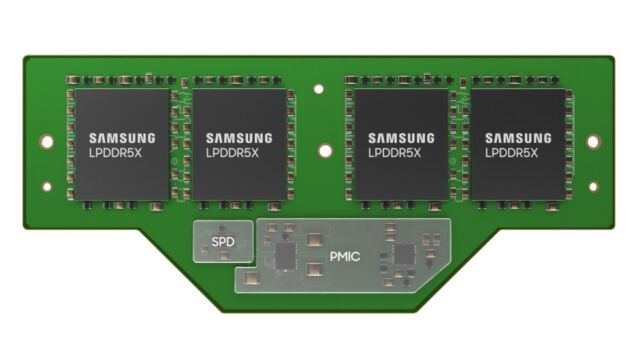
For PC gamers used to the modular design of a desktop rig, there are pros and cons to the all-in-one, pre-fab design of the Steam Deck (and its many subsequent imitators in the growing handheld gaming PC market). On the one hand, you don’t have to worry about pricing out individual parts and making sure they all work together. On the other hand, the only way to upgrade one of these devices is to essentially throw out the old unit and replace the entire thing, console-style.
Korean computer storage-maker Adata is looking to straddle these two extremes. Lilliputing reports on Adata’s XPG Nia prototype, which was shown off at the Computex trade show. The unit is the first gaming handheld so far to embrace the CAMM (Compression Attached Memory Module) standard that allows for easily replaceable and upgradeable memory modules, as well as a number of other mod-friendly features.
CAMM on down

If you’ve read our previous coverage of the emerging CAMM standard, you know how excited we are about the ultra-thin modules that can simply be screwed into place on a laptop or portable motherboard. That offers a viable replacement for the now-standard soldered LPDDR RAM, which saves space but is incredibly difficult to repair or replace.
The CAMM standard brings the same easy-to-swap design of the older SO-DIMM RAM stick standard, but with a smaller footprint, thermal design, and power usage specially made for portable devices. Reports suggest the XPG Nia will use the low-power LPCAMM2 version of these RAM modules, which will be easily accessible by lifting up the kickstand on the back of the XPG Nia. Alongside a standard M.2 2230 slot for adding more storage, that should make the new handheld much easier to upgrade than the likes of the Steam Deck, which requires some serious hacking to push above the standard spec.

Dell
The only real downside to CAMM2 memory modules, at the moment, is the price; a recent CAMM2 offering from Crucial runs $175 for 32GB or a whopping $330 for 64GB. That’s significantly more than similar, bulkier SO-DIMM modules, but those prices should come down as more device makers and RAM manufacturers start supporting the standard.
A “circular computing device”?
Thus far, the XRG Nia’s modular design doesn’t seem to extend to the planned AMD Phoenix APU or Ryzen Z1 Extreme processor. That said, users will reportedly be able to remove the entire motherboard from the portable case, which can then be inserted into a smaller, screen-free enclosure for a potential second life as an Arudino/Raspberry Pi-like mini-PC.
Adata says it also plans to release the system’s 3D design files and pinout details publicly, letting modders and third-party manufacturers design their own cases and accessories. It’s all part of what Adata is calling a “circular computing design” that’s part of its “sustainable future” initiative.
GGF Events talks with the makers of the Adata XPG Nia prototype at Computex.
There are a few other features that set the XRG Nia apart from the waves of me-too Steam Deck clones. In addition to the rear kickstand, the entire screen enclosure slides up on a sort of pivot, providing a shallower viewing angle that requires less neck tilting when holding the device in front of your chest. Adata is also promising a front-facing camera that can be used for streaming as well as eye-tracking, which could theoretically power some fancy foveated rendering tricks for extra graphics horsepower.
It’s way too early to know how all of these features will shake out in the move from prototype to final device; reports suggest the company is aiming for a release sometime in 2025. Still, it’s nice to see a company trying some new things in the increasingly crowded space of handheld PC gaming devices that Valve has unleashed. If Adata can deliver the portable as an actual consumer product at its target of 1.5 pounds and $600, it could be one to keep an eye on.




















+ There are no comments
Add yours